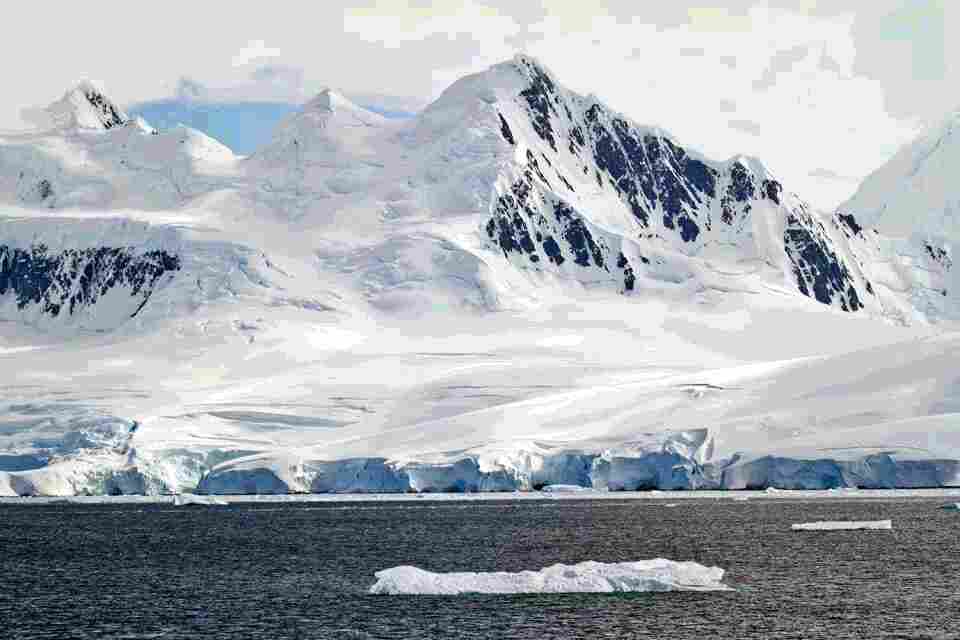Technology
Hidden lake in Antarctica the size of a CITY that we’ve never seen before found

A HUGE lake hidden deep below Antarctica has just been discovered by researchers.
The East Antarctic Ice Sheet – the largest ice sheet in the world – hosts a lake the size of a city underneath, scientists confirmed.
A huge lake hidden deep below Antarctica has just been discovered by researchers.
RADARSAT/European Space AgencyThe lake is thousands of meters below the East Antarctic Ice Sheet.[/caption]
Researchers from the University of Texas at Austin have designated the large body of water Lake Snow Eagle.
Sediments at the bottom of the lake may help scientists learn about the evolution of the East Antarctic Ice Sheet.
“This lake is likely to have a record of the entire history of the East Antarctic Ice Sheet, its initiation over 34 million years ago, as well as its growth and evolution across glacial cycles since then,” geophysicist Don Blankenship said.
“Our observations also suggest that the ice sheet changed significantly about 10,000 years ago, although we have no idea why.”
Read more on Antarctica
While this new discovery is significant, it’s not the only one of its kind – more than 275 lakes have been uncovered beneath Antarctica.
Known as subglacial lakes, the bodies of water are overlain by several miles of ice and are interconnected with water flowing from lake to lake.
They form at the intersection between ice and the underlying bedrock, where gravitational pressure decreases the pressure melting point of ice.
Over time, the overlying ice melts at a gradual rate of a few millimeters per year due to geothermal heat radiating up from the Earth’s interior.
Most read in Tech
“Some of these lakes may have been isolated from the outside world for up to 35 million years and may be final refuges for life, the like of which exists nowhere else on Earth,” glaciologist Bethan Davies writes for Antarctic Glacier.
Subglacial lakes were first uncovered in 1970 and are typically identified using airborne radio-echo instruments.
Radar signals can penetrate through the ice and then bounce back to give scientists an indication of what lies below the ice.
If the signal hits liquid water, it comes back as brighter, or more reflective, according to Science Alert.
However, changes in subglacial lake levels can also be observable at the ice surface via satellite, which is what led researchers to Lake Snow Eagle.
The team, led by geophysicist Shuai Yan, noticed a ‘depression’, or a region of low atmospheric pressure, over the ice sheet.
And then further analysis of radar data revealed a large patch of water, deep below the ice.
“I literally jumped when I first saw that bright radar reflection,” Yan said in a statement.
The subglacial lake lies around 2 miles (3.2 kilometers) beneath the ice sheet and is around 656 feet (200 meters) deep.
It measures around 26 miles long and 9 miles wide and features about 21 cubic kilometers of water.
Most notably, a layer of sediment can be found at the bottom of the lake, which may help the team look back into time.
Read More On The Sun
“This lake’s been accumulating sediment over a very long time, potentially taking us through the period when Antarctica had no ice at all, to when it went into deep freeze,” glaciologist Martin Siegert of Imperial College London in the UK said.
“We don’t have a single record of all those events in one place, but the sediments at the bottom of this lake could be ideal.”
We pay for your stories!
Do you have a story for The US Sun team?
Email us at exclusive@the-sun.com or call 212 416 4552.
Like us on Facebook at www.facebook.com/TheSunUS and follow us from our main Twitter account at @TheSunUS

